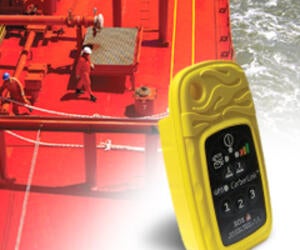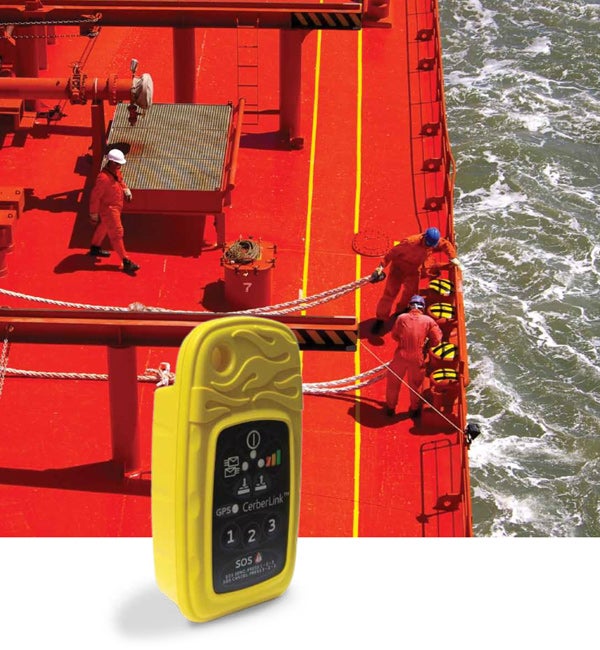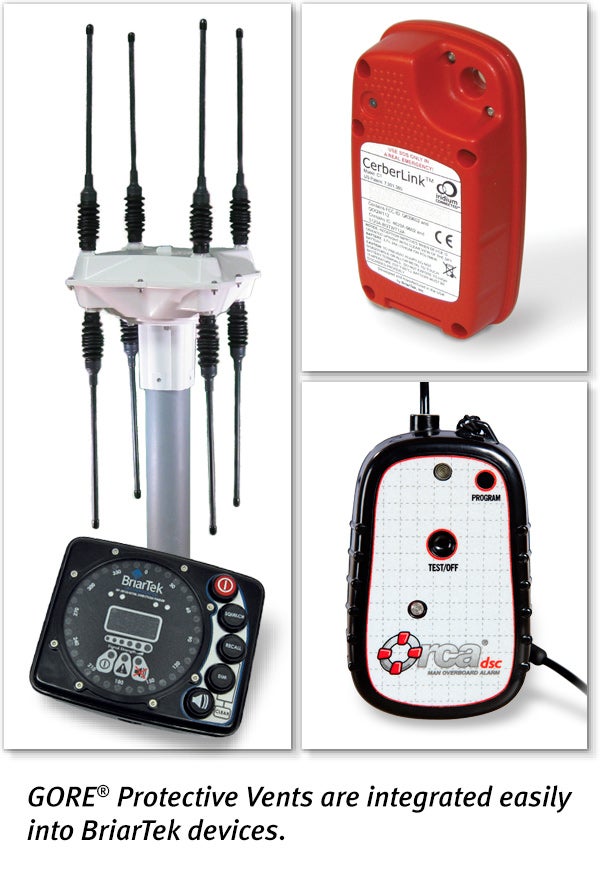GORE® Protective Vents Enable Battery Outgassing in Waterproof Enclosures

Case Studies, United States
BriarTek, Incorporated, the global manufacturer of ORCA® man-overboard alarm systems, needed to outgas the batteries from the sealed alarm enclosure to prevent internal buildup, while meeting the Ingress Protection 67 (IP67) standard for water immersion.
Situation

BriarTek, Incorporated, the global manufacturer of ORCA® man-overboard alarm systems, develops transmitters, receivers and direction finders used by the military to ensure safety of their personnel. On-deck personnel wear a pager-sized transmitter that automatically activates after 3.5 seconds of water immersion, sending a signal to the on-board receivers to trigger an audible alarm. The signal is also received by multiple direction finders of emergency response authorities who can then locate and rescue the person in the water. BriarTek has recently expanded this technology with the new Cerberus global communication system to enable outdoor enthusiasts to maintain contact with family and friends back home – even when traveling through the more isolated areas of the world.
Challenge
BriarTek faced several challenges when designing the alarm systems. First, government specifications required the use of certain batteries in the alarm systems. The gases from these batteries need to have an exit path from the enclosure to prevent internal buildup. BriarTek also had to meet the Ingress Protection 67 (IP67) standard for water immersion, so they could not use a tortuous path or open hole to allow the gases to escape. Yet, completely sealing the enclosure would prevent the battery from venting air in the event of gas buildup. Sealed enclosures are not designed to account for negative pressure differentials in which the outside air is at a lower pressure than the air found inside the enclosure. This can lead to gas buildup inside the enclosure and create a potential explosion.
The third challenge BriarTek encountered was the need to account for internal pressure differentials caused by altitude changes as the systems were shipped to customer locations around the world. Because most shipping containers are not pressurized, the alarm and tracking systems could experience pressure differentials, particularly at high altitudes. If the altitude changes are not compensated for, the resulting vacuum could cause the devices to bulge out or even explode. BriarTek needed a means to allow the battery to outgas while protecting the electronics from water during immersion as well as maintaining equalized pressure inside the enclosure during transport.
Solution

After researching alternatives, BriarTek selected several GORE® Protective Vents for their applications. According to Alex Rich, the mechanical engineer for product development at BriarTek, they selected different vents based on the size and airflow requirements of each device. For example, they selected a vent with a 2.35 millimeter (mm) outer diameter and an airflow of 7 milliliters/minute combined with a polypropylene housing for the ORCA®transmitter and the CerberLink™ satellite messaging device, because they needed the smallest possible vent with minimal airflow. However, the ORCA®direction finder’s antenna system was larger with more free air volume inside, so they selected a GORE®Press-fit Vent with a 10 mm outer diameter that has a typical airflow of 44 milliliters/minute and a thermoplastic elastomer housing.
According to Rich, they find it very simple to install the vents. “We chose a press-fit vent because it’s transparent to the user and easy to install on the outside, taking up no space inside the enclosure. We simply press the vent onto the housing using a soft plastic dowel – on the battery door of the portable devices and on the front of the direction finder. And the low profile of the vents decreases the chance of users damaging the vent.”
When asked about the vents’ performance, Rich replied, “We installed our first GORE® Protective Vent over five years ago in the original ORCA® TX-104, and we have not had any failures. We are in the business of saving lives, so we need to ensure reliable performance in the most rugged environments. That’s why we incorporate these vents into our products.”
FOR INDUSTRIAL USE ONLY
Not for use in food, drug, cosmetic or medical device manufacturing, processing, or packaging operations.